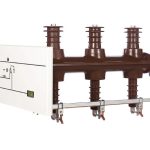Capacity means the flow rate with which liquid is moved or pushed by the pump to the desired point in the process. It is commonly measured in either gallons per minute (gpm) or cubic meters per hour (m3/hr). The capacity usually changes with the changes in operation of the process. For example, a boiler feed pump is an application that needs a constant pressure with varying capacities to meet a changing steam demand.
The capacity depends on a number of factors like:
● Process liquid characteristics i.e. density, viscosity
● Size of the pump and its inlet and outlet sections
● Impeller size
● Impeller rotational speed RPM
● Size and shape of cavities between the vanes
● Pump suction and discharge temperature and pressure conditions
For a pump with a particular impeller running at a certain speed in a liquid, the only items on the list above that can change the amount flowing through the pump are the pressures at the pump inlet and outlet. The effect on the flow through a pump by changing the outlet pressures is graphed on a pump curve.
As liquids are essentially incompressible, the capacity is directly related with the velocity of flow in the suction pipe. This relationship is as follows:
Description: centpumps_eq3a
where:
Q = Capacity in GPM (gallons per minute)
V = Velocity of the flow in ft/s
A = Cross sectional area of pipe if ft2
Eq. (3)
Head
Significance of Using the Term “Head” Instead of the Term “Pressure”
The pressure at any point in a liquid can be thought of as being caused by a vertical column of the liquid due to its weight. The height of this column is called the static head and is expressed in terms of feet of liquid.
The same head term is used to measure the kinetic energy created by the pump. In other words, head is a measurement of the height of a liquid column that the pump could create from the kinetic energy imparted to the liquid. Imagine a pipe shooting a jet of water straight up into the air, the height the water goes up would be the head.
The head is not equivalent to pressure. Head is a term that has units of a length or feet and pressure has units of force per unit area or pound per square inch. The main reason for using head instead of pressure to measure a centrifugal pump’s energy is that the pressure from a pump will change if the specific gravity (weight) of the liquid changes, but the head will not change. Since any given centrifugal pump can move a lot of different fluids, with different specific gravities, it is simpler to discuss the pump’s head and forget about the pressure.
So a centrifugal pump’s performance on any Newtonian fluid, whether it’s heavy (sulfuric acid) or light (gasoline) is described by using the term ‘head’. The pump performance curves are mostly described in terms of head.
A given pump with a given impeller diameter and speed will raise a liquid to a certain height regardless of the weight of the liquid.


